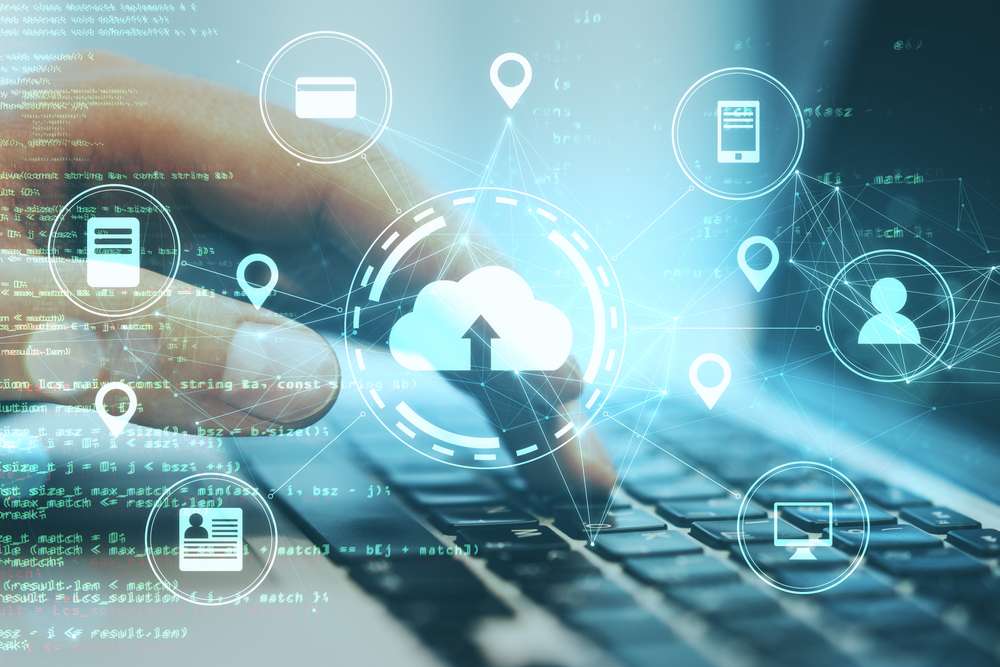
Introduction to Learning Management Systems (LMS)
A Learning Management System (LMS) is a software application or web-based technology used to plan, implement, and assess a specific learning process. It provides the necessary framework that handles all aspects of the learning process, an inclusive model that includes, among numerous other features, course management and delivery, student follow-up, assessment, and various other functionalities.
The central purpose of an LMS is to enhance the learning process. An LMS focuses on online learning delivery but can also support a range of uses, acting as a platform for fully online courses, as well as several hybrid forms, such as blended learning and flipped classrooms.
LMS can be utilized in multiple environments, in higher education, corporate training settings, but also in kindergarten to high school settings. They can also be a part of an extended enterprise.
The core of a learning management system is often considered to be the capability to distribute courses and manage users. It covers the administration, documentation, tracking, and reporting of training programs, classroom and online events, e-learning programs, and training content.
However, modern Learning Management Systems have evolved well beyond these essential functions and now usually include features for managing instructional content or collaboration and communication tools among many others. For example, many learning management systems include functionality for online discussions. This feature can be particularly useful in a distance learning context or for collaborative learning activities occurring as part of a blended learning experience.
Captivatingly, a learning management system is customizable to its core. It can be transformed according to the needs of the users and can equally grow with them as their learning improves. Businesses, organizations, and educational institutions can choose from a wide array of features and tailor their LMS platform to match their needs and objectives.
LMS is not just a trend; they have molded into a vital part of learning processes worldwide, bringing a new dynamism to the educational landscape. It has dramatically increased in relevance over the years and continues to play a significant role in instruction and learning, complementing traditional methods, and introducing new ones.
LMS is not just a tool; it is a pathway to more effective learning methods, greater integration of technology in education, a more personalized educational experience, and a more satisfied, engaged, and enlightened learning community. Understanding its roles, functionalities, and dynamics is the key to leveraging its capabilities for enhancing the learning experience. In the subsequent chapters, we will delve deeper into how LMS has evolved, its essential components, how its various dynamics play out, and its impact on modern education.

Evolution and Development of LMS
Learning Management Systems (LMS) have steadily evolved over the years, tracing their roots back to the late 20th century. The evolution is mainly in response to the ever-changing educational landscape and technological advancements.
In the early stages, systems similar to LMS were used by universities primarily for administrative purposes. The aforementioned systems, known as Management Information Systems (MIS), were the pioneers that set the stage for what would later evolve into today’s sophisticated LMS.
In the 1990s, with the onset of the digital age, educational institutions began to experiment with different ways to leverage technology for teaching and learning. This era was marked by a shift towards computer-based learning. Systems such as the Computer Managed Instruction (CMI) and Computer Assisted Instruction (CAI) were developed. These were precursors of LMS and were primarily used to deliver instructional material and track student progress.
Shortly after, the Internet boom took over, catalyzing the transformation of these systems into fully-fledged LMS. The first generation of LMS was fairly limited. They were primarily used to digitize existing coursework, allowing institutions to expand reach and promote flexibility in learning. In these early stages, the focal point was primarily on content management and administrative functions
As technology continued to advance, these systems started incorporating more complex features. The second generation of LMS saw the inclusion of more interactive elements. This included real-time communication tools like chat rooms and forums, and later, video conferencing. This generation ushered an era of greater collaboration and communication, an aspect that closely mirrored the traditional classroom environment.
The rise of web 2.0 in the mid-2000s revolutionized learning further. The Internet became more interactive and user-centered. Consequently, LMSs evolved into more robust and responsive platforms. They began to incorporate elements of social learning such as blogs, wikis, and other collaborative tools. This phase marked a considerable shift in focus; from content delivery and management to promoting a more interactive, collaborative learning environment.
The current generation of LMS is defined by not only advanced functionalities but also by cloud-based technology. These platforms are significantly more versatile, not just in terms of functionality, but also in terms of accessibility. They allow learning to take place anywhere, anytime, and on any device, marking a significant step towards mobile learning.
Looking back, it’s clear that LMS development has paralleled technological advancements. Each generation has progressively enhanced the learning experience, both for educators and learners. Today’s LMS have certainly traveled a long distance from being simple administrative tools to becoming comprehensive learning platforms that incorporate a variety of teaching and learning aspects. As technology continues to grow, so will the capabilities and potential of Learning Management Systems.

Key Components of a Learning Management System
A Learning Management System, or LMS, is a powerful platform designed to manage and deliver educational courses or training programs. While these systems may vary in specific features or capabilities, they revolve around certain core components that make them integral tools in the realm of e-learning. Here, we are going to delve into the key components of a Learning Management System.
1. Course Management: One of the main components of an LMS is the ability to manage and organise courses. This may include creating, editing, and organising courses and content to cater to the specific needs of the learners. Many LMS platforms allow importing and exporting of courses from different platforms, as well as sorting courses into categories for easy access. They also often support various formats like video, audio, and PDF, to accommodate a myriad of learning styles.
2. User Management: User management ensures that only the right learners have access to the appropriate content. It covers a gamut of capabilities – from setting up users and defining their roles, to managing enrollments and tracking learner progress. It provides comprehensive administrative control over who gets to do what, serving as a commanding tool in the hands of educators or training managers.
3. Communication Tools: An LMS should be equipped with communication and collaboration tools that foster interactive learning. This includes features like discussion boards, instant messaging, email notifications, and even video conferencing. These tools enable real-time communication between learners and instructors, thus enhancing learner engagement and making the learning experience more rich and diverse.
4. Assessment and Testing: Assessment tools are a vital part of any comprehensive LMS. They allow instructors to create quizzes, tests, or exams to monitor learner progress and knowledge retention. This feature often comes with automatic grading capabilities, timesaving on the administrative end. Feedback and scoring can also usually be customised to align with the course objectives.
5. Reporting and Analytics: An LMS must provide robust reporting and analytics to track learner progress, course completion, test scores, and more. These insights serve as a feedback mechanism for instructors to evaluate the effectiveness of their program and make necessary adjustments. It also helps in recognising the strengths and weaknesses of individual learners, which allows for personalised learning paths.
6. Integration Capabilities: The LMS should seamlessly integrate with other software and systems, such as customer relationship management (CRM) tools, human resources systems, or communication platforms. This makes it more flexible and capable of fitting into the existing tech infrastructure of an education institution or business.
7. Security: An often-overlooked but crucial aspect of an LMS is its security. Given the sensitive nature of data, it is vital that an LMS comes with strong security measures. This includes password protection, encryption, secure login, backup measures, and regular security updates.
Understanding these key components of an LMS is crucial for those looking to select an LMS that fits their needs. In the end, the efficacy of an LMS boils down to how well these features are exploited to deliver a productive and fruitful learning experience.

Dynamics of LMS: Interactions and Functionalities
Learning Management Systems (LMS) are more than just software applications. They represent an entire digital environment where teaching, learning, and administrative tasks take place. The true power of an LMS rests in its interactive functionalities, allowing different actors such as learners, educators, and LMS administrators to interact dynamically.
To start with, the learner’s perspective is of primary importance. The LMS provides an interactive, user-friendly interface where learners can access course materials, participate in discussion forums, take quizzes, and check their progress. Modern LMS’s are more learner-centric, focusing on personalization to meet individual needs. With analytics tools, an LMS can offer personalized learning paths, helping learners to master subjects at their own pace and style.
Another core interaction within the LMS is between learner and instructor. Teachers can upload content, set assignments, grade work, and provide feedback. The power of an LMS lies in its ability to facilitate seamless communication and collaboration. The LMS serves as a platform for collaborative learning activities, providing tools such as wikis, blogs, and chat rooms. Instructors can also track the progress of individual students, identify areas of weakness and offer necessary support promptly.
Administrators, who may be IT staff or managerial personnel, oversee the more technological and managerial aspect of LMS. They set up the system, manage users, take care of data and security, and ensure that the system is running smoothly. With a well-implemented LMS, administrators can gain insights into the learners’ progress, engagement levels, and course efficiency through the system’s analytics functionality.
The system’s interactive functionalities also expand beyond the individual user experience. Through features such as forums, chats, and group projects, the LMS fosters a sense of community among learners. Synchronous and asynchronous communication functionalities (face-to-face virtual meetings vs discussion boards) create a rich, collaborative environment that encourages peer interaction and learning.
Additionally, mobile learning has become an integral part of LMS dynamics. Many LMS platforms now offer mobile compatibility, not merely as an extension of desktop services, but as a fully functional learning environment. This has opened a new realm of possibilities, promoting flexible, anytime-anywhere learning, thus enhancing user engagement.
LMS platforms are also adapting to the changing dynamics of the education system by integrating with other educational technologies. Integration with tools such as plagiarism checkers, e-portfolio systems, and virtual classrooms make an LMS not just a repository for learning resources, but a holistic educational management solution.
Another facet of LMS dynamics involves adaptive learning. Some sophisticated LMS platforms employ artificial intelligence (AI) to adapt the content according to learners’ needs and behavior. AI can analyze a learner’s engagement, performance, and even emotions to provide customized learning experiences, thus fostering better outcomes.
The functionalities of an LMS can be quite powerful and transformative when utilized effectively; however, it’s beneficial to keep in mind that the effectiveness of an LMS remains largely dependent on the users’ understanding of the system. Hence, investing in proper training can significantly help users to better harness the potential of the LMS.
In conclusion, the dynamics of LMS go far beyond its technical component. They encompass the entire educational ecosystem, with the interactions within this virtual space shaping the teaching and learning experience. Understanding these interactions and functionalities can help institutions maximize their LMS investment, delivering effective education in today’s digital age.

The Impact of LMS on Modern Education
The advent of Learning Management Systems (LMS) has brought a significant transformation in the landscape of modern education. The ability to disseminate knowledge beyond the boundaries of traditional classrooms and redefining the pace of learning to the learner’s comfort has broadened the horizons of education.
One of the key ways LMS has impacted modern education is in its contribution to the growth of e-learning. As per a report by Docebo, e-learning market worldwide is expected to surpass USD 300 billion by 2025. The LMS’s ability to host vast course materials, including videos, presentations, and texts, allowing students to access these resources at their desired time and place, is facilitating this surge. This shift to e-learning has not only made education more accessible for those working or based in remote locations, but has also facilitated continuous learning for existing professionals.
Secondly, LMS has helped in individualizing education, catering to the learning needs of every individual. Traditional classrooms, bound by the constraints of time and student-teacher ratio, often fail to provide personalized attention to each student. However, with the adaptive learning features of LMS, courses can be modified according to the learning speed and style of individual students, thereby increasing their engagement and effectiveness of learning.
Apart from students, LMS has also transformed the role of teachers and instructors. It facilitates teachers with a platform where they can create, manage, and track courses efficiently. They can monitor individual students’ progress, provide timely feedback, and modify instructional methods based on student responses, all within a single platform. This not only reduces the administrative burden of teachers but also enables them to focus more on teaching and student interaction.
Moreover, LMS also promotes collaborative learning. It provides features like discussion boards, chat rooms, and group assignments, which allow students to interact with each other, share resources, and work collectively on projects. Such peer-to-peer interactions not only enhance knowledge sharing, but also develop teamwork and communication skills in students.
Lastly, the data-driven insights provided by LMS are invaluable for educational institutions. By analyzing course participation statistics, completion rates, and feedback, educators can identify gaps in teaching methods or course content, thereby making necessary revisions to enhance the learning outcomes.
In conclusion, LMS has emerged as a powerful tool, altering the traditional methods of learning. It has not only made education more flexible and personalized, but has also made it a more engaging and collaborative process. As technology continues to advance, it can be expected that these systems will further evolve, opening new avenues in the world of education.
Challenges and Solutions in Implementing LMS
Implementing a Learning Management System (LMS) in any educational institution introduces an innovative approach to the learning process. However, it is not without challenges. Some of these challenges revolve around customization, user resistance, technical issues, and the system’s scalability.
One major challenge is customization. Systems are often generic with a one-size-fits-all approach, which may not suit a particular institution’s unique needs. To overcome this, an institution can seek an LMS vendor who offers customization, or have an in-house IT team develop custom modules. Marginally higher costs might be involved initially, but the long-term benefits of a custom-tailored LMS are numerous.
User resistance is yet another significant challenge organizations might face. This resistance might emerge from a lack of familiarity with digital platforms, fear of change, or even the intimidation of technology. Providing adequate training sessions can help users gain confidence in using the system. The training should be user-specific—administrators, educators, and students may all need different levels of instruction. In addition to training, providing user-friendly guides and strong technical support can promote user adoption.
Technical issues constitute the third major challenge during LMS implementation. Problems with hosting, pace of the system, integration with existing software, or data migration could all be potential hindrances. Anticipating these issues and having an IT help desk in place could help fix glitches promptly and ensure smooth functioning. Also, it would be prudent to consider an LMS with a robust and reliable cloud-based model, thereby ensuring smooth functioning and the ability to handle heavy traffic.
The fourth main challenge lies in scaling the LMS as the institution grows. A system that works well for a small group of users might not function just as efficiently when thousands of users are added. Therefore, it’s crucial to choose a flexible and scalable LMS which can accommodate growth and change over time. One solution could involve seeking providers who can readily accommodate changes in user base size, offering the flexibility to scale up or down as needed.
Implementation of an LMS is not an easy task by any stretch of the imagination. However, by acknowledging challenges upfront, crafting mitigative strategies, and adopting a long-term vision for digital learning, an institution can successfully navigate the teething stages. A well-implemented LMS has immense potential to transform an institution’s learning environment and align it with the evolving digital education scenario.
Future Trends of Learning Management Systems
The future of Learning Management Systems (LMS) holds potential for groundbreaking advancements, driven by technology trends that will redefine the landscape of eLearning. By constantly adapting and incrementally incorporating these trends, LMS can provide a more intuitive, personalized, and effective learning experience.
Firstly, we anticipate a stronger integration with Artificial Intelligence (AI). While it’s already being used in some aspects of LMS, like personalization of the learning process, it will soon advance to more complex domains. For instance, AI can give real-time feedback, evaluate learner’s progress, identify gaps in content, and even predict future learning trajectories.
Secondly, we expect a surge in mobile learning. While already on the rise, the concept of mobile learning is expected to truly take off in the coming years, with learners being able to access their educational material from anywhere, anytime. LMS platforms capable of adapting to this mobile trend will be frontrunners in future eLearning settings.
The third trend is Extended Reality (XR), which includes Virtual Reality (VR), Augmented Reality (AR), and Mixed Reality (MR). These immersive technologies can provide learners with realistic, interactive simulations, boosting engagement and retention rates. Many LMS are adopting this technology already, and it’s likely to play an increasingly significant role in the future.
Further, Big Data and Learning Analytics are poised to transform LMS. By harnessing the data learners generate when interacting with the system, valuable insights can be drawn out about their learning processes, preferences, strengths, weaknesses, and engagement levels. This will allow for better curriculum design, personalized tutoring, prediction of educational outcomes, and much more.
Lastly, we’ll see improved social learning capabilities, regarding interactivity and engagement. LMS’s would provide students with opportunities to collaborate and learn, through discussion platforms, virtual classrooms, and real-time feedback. This increased social functionality within online learning environments aims to mimic traditional classroom experiences, boosting learner’s motivation.
In conclusion, the trends discussed provide glimpses of a future where learning will be much more dynamic, learner-centric, and effective than today. The future LMS will not just be a simple tool to deliver content and track progress, but a comprehensive learning ecosystem that nurtures learner’s progress by integrating advanced technologies and methodologies. The specific implementations and influence of these trends may differ, but the direction is clear – improving the learning experience through adaptive, engaging, personalized, and data-driven approaches.


